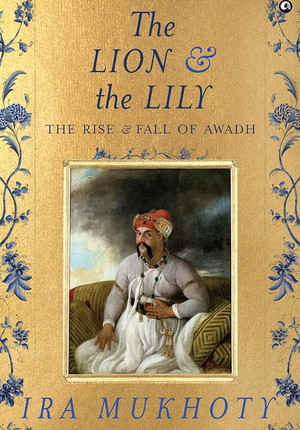Decadent despots or barriers to British hegemony? Awadh’s early Nawabs – and Begums – reexamined (Book Review)
New Delhi, Sep 20 (IANS) Leave alone the dynasty, their title has become a byword for luxurious indulgence, cultural refinement, genteel fastidiousness — the famed ‘nafasat’ and ‘nazakat’, and political passivity, but do the Nawabs of Awadh deserve their posthumous (largely) ignoble reputation?
Or is it a historic hatchet job by a foreign power, steadily gobbling up large tracts of the Indian subcontinent amid a tumultuous era, and denigrating all the powerful national political entities that could have blocked its path of territorial aggrandisement?
It is the latter thesis that author Ira Mukhoty focuses on in her latest work ‘The Lion and The Lily: The Rise and Fall of Awadh’ (Aleph Book Company, Rs 999, 504 pages) as she seeks to set the record straight on “a largely tainted and skewed version of history, especially with regard to the tumultuous eighteenth century, and in particular pertaining to Lucknow and the province of Awadh.”
This, she adds, ensures that the “multiplicity of truths and voices that make up the complex and intertwined world of the century comes to us largely in bland soliloquy.”
As she charts the course of the realm of Awadh and its first few nawabs, her backdrop is not only the turbulent subcontinent throughout the 18th century but also the wider chessboard signifying the global duel for supremacy between the dominant powers of the day. Mukhoty goes on to show that India was not just another battleground in Britain and France’s conflict, but what happened there had its repercussions far around the world — particularly the eastern coast of what was then British America.
Another major element that Mukhoty, whose earlier works on Indian history include ‘Heroines: Powerful Indian Women of Myth and History’ (2017), ‘Akbar: The Great Mughal’ (2020), as well as debut novel ‘Song of Draupadi’ (2021), is the outcome of the “monochrome recording of Indian history.”
This, she argues, suggests the “inevitability of British expansion, accompanied by a certain sighing acquiescence, or worse still, a simpering ineptitude on the part of many Indian rulers to this takeover.”
However, British rule was never foreordained or easy, she contends, citing Maya Jasanoff, author of ‘Edge of Empire: Lives, Culture, and Conquest in the East, 1750-1850′ (2006), who chronicled how both indigenous powers and the French contested British expansion in India.
In fact, Mukhoty’s book begins with what was the beginning of the European armed challenge to well-established authority, long before Plassey and beyond the Portuguese, who were content in their coastal enclaves and never confronted the Mughals, when a French force, which overran Madras in 1746, defeated – twice – a Mughal force, led by the Nawab of the Carnatic’s son. However, the French did not follow through.
Mukhoty’s book, and several other recent works like Roderick Mathews’ ‘The Flaws In The Jewel: Challenging the Myths of British India’ (2010), with its fine selection of counterfactual alternatives, shows there were at least several powers, who could have countered the British in the late 18th century. These were the Nawabs of Awadh – at least the first three, the ‘Great Maratha’ Mahadji Scindia, and Mysore’s Tipu Sultan, but the latter two had passed away or been eliminated by the century’s last decade and Awadh shackled.
Focusing on Awadh, Mukhoty seeks to understand the “finesse with which the nawabs and begums navigated a constantly changing world.”
Thus, apart from the Nawabs — of which she covers the first four (out of 10) and it is latter two who get the most prominence, some of their indomitable and influential consorts like Nawab Aliya Sadrunissa or Nawab Begum, wife of the second Nawab, the famously monogamous Safdar Jang, whose name lives on in large part of south Delhi, and Aliya Amat-uz-Zehra or Bahu Begum, the wife of his successor Shuja-ud-Daula, get their due.
Both the Begums, who used to live in Faizabad — while it was the Nawabi capital and after, controlled large fortunes and exerted considerable power beyond zenana politics. As we learn here, they had a role in the revolt of Raja Chait Singh of Benares — a major threat to British expansion into the north. They were to be hounded and vilified by the British. But, it did backfire on Warren Hastings — history students will remember that the “despoliation of Begums of Oudh” was a charge against him in his impeachment.
This work also throws new light on a large host of many other contemporary Indian rulers and noblemen, the courtiers of Awadh — loyal (especially Rajas Tikait Rai and Jhau Lal) or time-serving, venal, power-hungry invaders and colonisers, and intrepid French adventurers (beyond the ubiquitous Claude Martin).
The politics are interspersed with sections on religion, art, literature, fashion, and cuisine – and the evolution of the ‘Ganga-Jamuni’ tehzeeb. Hopefully, there will be a sequel covering the latter Nawabs.
–IANS
vd/kvd



Comments are closed.